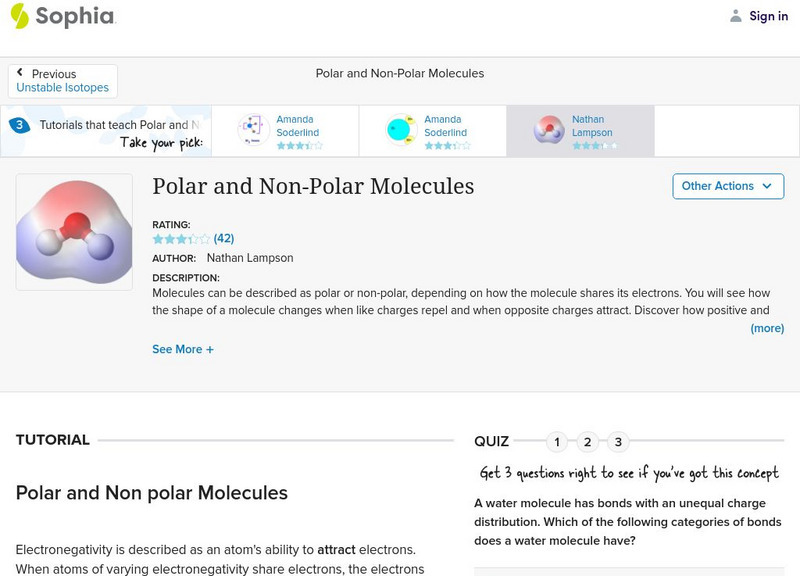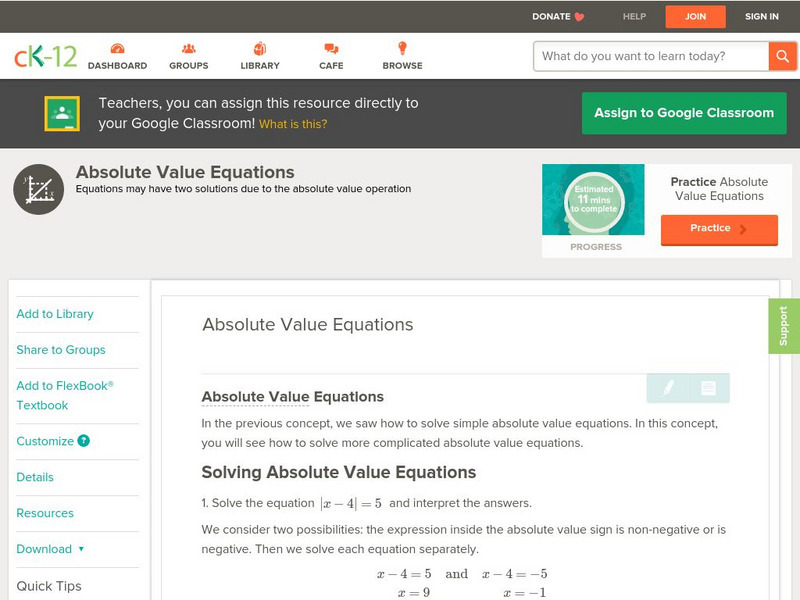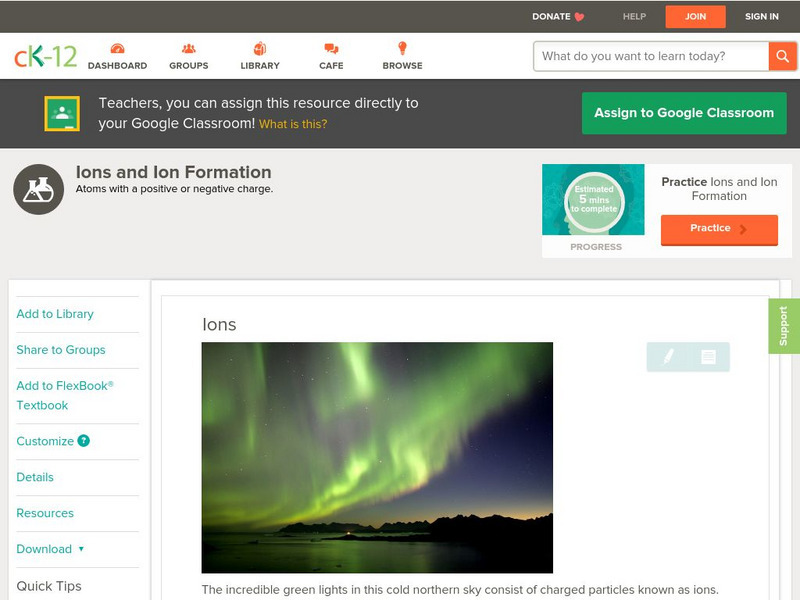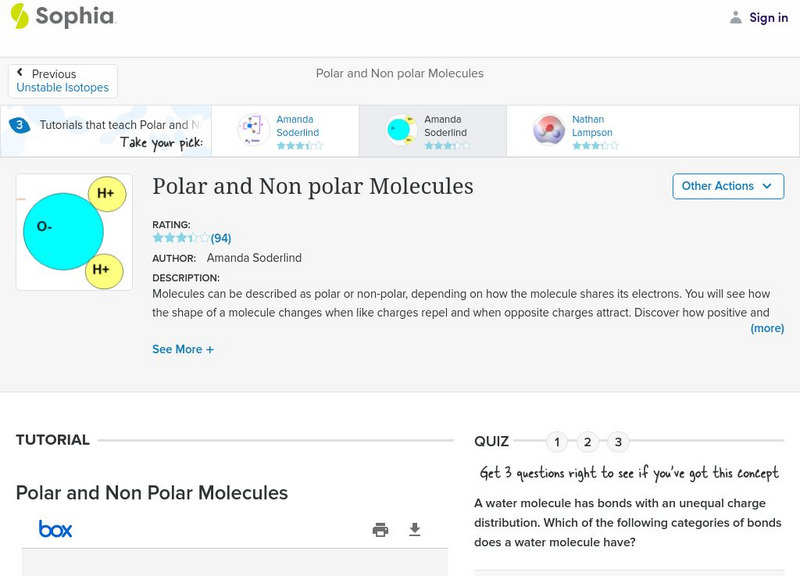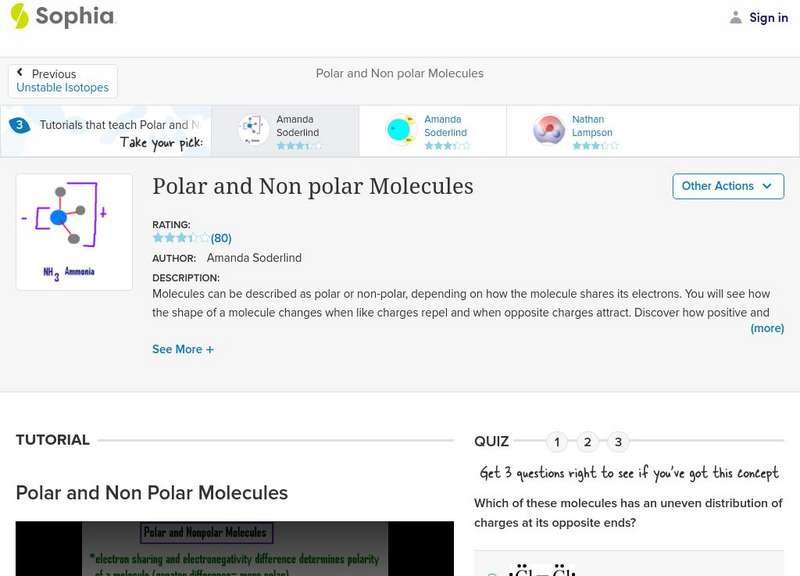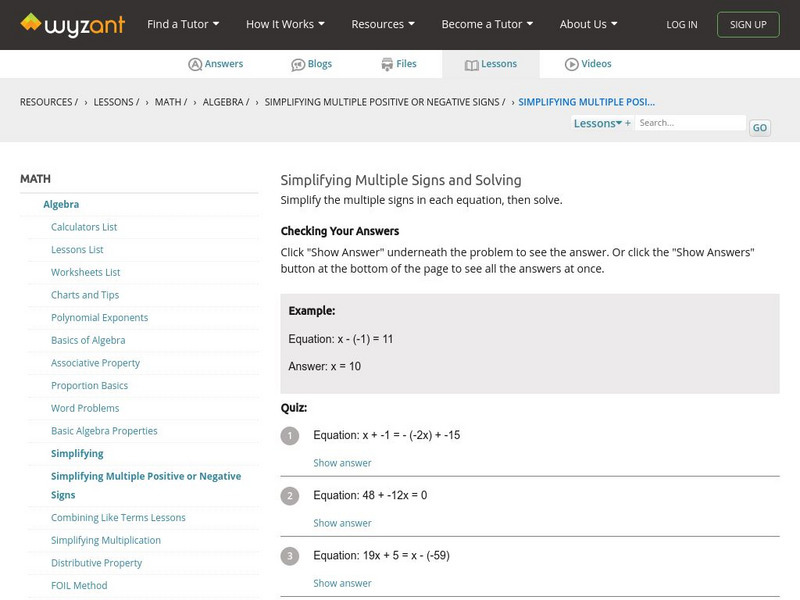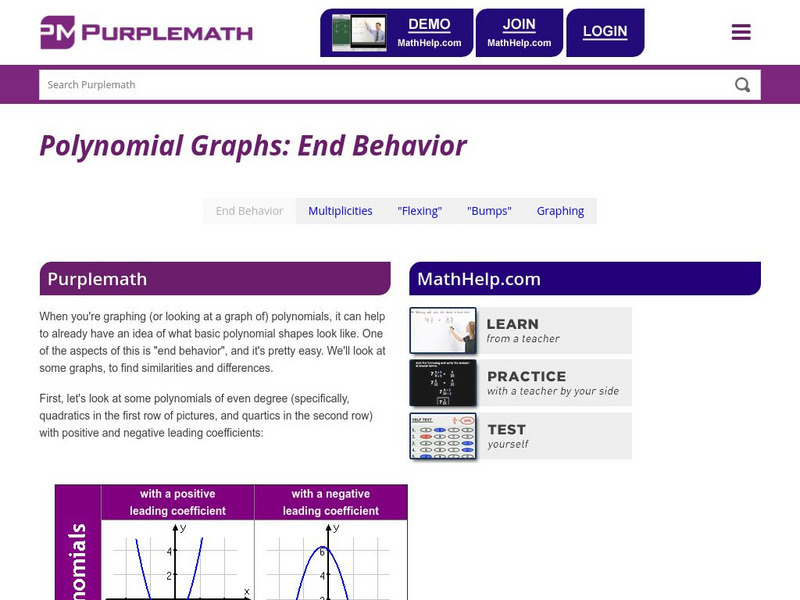TED Talks
Ted: Ted Ed: Feedback Loops: How Nature Gets Its Rhythms
Anje-Margriet Neutel describes some common positive and negative feedback loops, examining how an ecosystem's many loops come together to make its 'trademark sound.' [5:11]
Sophia Learning
Sophia: Polar and Non Polar Molecules: Lesson 1
This lesson will introduce polar and non-polar molecules, explaining their location, charge, and mass. It is 1 of 3 in the series titled "Polar and Non polar Molecules."
CK-12 Foundation
Ck 12: Algebra: Absolute Value Equations
[Free Registration/Login may be required to access all resource tools.] In this lesson students solve absolute value equations and interpret the solution. Students can watch a video tutorial, explore guided notes and attempt practice...
Tutor2u
Tutor2u: Market Failure Positive Externalities
This site examines how society can benefit by producing and consuming more of a product that causes a positive externality.
CK-12 Foundation
Ck 12: Physical Science: Ions
[Free Registration/Login may be required to access all resource tools.] Ions, how they form and their properties.
PBS
Pbs Learning Media: Inventing Negative Numbers
In this Cyberchase video segment, the CyberSquad locates the Cyberchase Council by using negative numbers.
Better Lesson
Better Lesson: Adding and Subtracting Integers on a Number Line
Sixth graders work with a number line and football to model adding and subtracting integers.
Concord Consortium
Concord Consortium: Direction and Strength of Force in Electric Fields
Explore the strength of force between charged objects.
Concord Consortium
Concord Consortium: Electric Potential Energy and Charge Intensity
Compare the potential energy of particles with varying amounts of charge.
Sophia Learning
Sophia: Polar and Non Polar Molecules: Lesson 2
This lesson will introduce polar and non-polar molecules, explaining their location, charge, and mass. It is 2 of 3 in the series titled "Polar and Non polar Molecules."
Sophia Learning
Sophia: Polar and Non Polar Molecules: Lesson 3
This lesson will introduce polar and non-polar molecules, explaining their location, charge, and mass. It is 3 of 3 in the series titled "Polar and Non polar Molecules."
ClassFlow
Class Flow: Negative Numbers
[Free Registration/Login Required] In this flipchart students apply their knowledge of integers to combine positive and negative integers and locate their position on a number line.
ClassFlow
Class Flow: Order Negative
[Free Registration/Login Required] The teacher will use this lesson plan flipchart to review positive and negative numbers.
ClassFlow
Class Flow: Positive and Negative Numbers
[Free Registration/Login Required] This lesson is an early introduction to positive and negative numbers.
ClassFlow
Class Flow: Slope
[Free Registration/Login Required] Slope (positive, negative, no, and undefined) in the real world.
Wyzant
Wyzant: Simplifying Multiple Signs Worksheet
Dealing with multiple positive and negative signs in an algebra equation can be a challenge for some students. This inter-active quiz from WyzAnt provides 20 multiple-sign equations and their answers for students to test their knowledge.
ClassFlow
Class Flow: Multiplication of Integers
[Free Registration/Login Required] This flipchart explores the rules of multiplying integers that have a positive and negative value.
ClassFlow
Class Flow: Always, Sometimes, Never
[Free Registration/Login Required] In this lesson, students will be given ten statements. Using the Activotes, they are to choose whether each statement is always true, sometimes true, or never true.
ClassFlow
Class Flow: Fraction Decimal Equivalent
[Free Registration/Login Required] The teacher will use this lesson plan to identify and represent on a number line decimals, fractions, mixed numbers, positive and negative integers.
Purple Math
Purplemath: Polynomial Graphs: End Behavior
Explains how to recognize the end behavior of polynomials and their graphs. Points out the differences between even-degree and odd-degree polynomials, and between polynomials with negative versus positive leading terms.
Other
Grammar Monster: What Does Connotation Mean?
Learn the difference between positive and negative connotation, and then practice determining connotation in context examples. Please be aware that this is an ad-heavy resource.



